All World’s Strongest Man Competition Winners: History Recap
Unlock your full potential by engaging with our experts and community! Have questions about your fitness journey or looking for expert advice on weightlifting techniques? Don’t hesitate — leave a comment below and Sergiy Osipchyk will provide a personalized answer and insights to help you reach your goals.
Torokhtiy is reader-supported. Some links are affiliate links, and we may earn a commission at no extra cost to you. See our disclosure page for details.
Get to know the insights of the World Strongest Man competition, with a full list of each year’s leaders. Throughout the years, you’ll see who made history and kept on impressing the audience with ultimate strength and resilience. Imagine what these strongmen put themselves through to be the best.
Find out the World’s Strongest Man winners who prove their extraordinary physical strength and exceptional athletic mastery. Discover the origins of the strongman competition and how it developed over the centuries.

World’s Strongest Man Competition: Overview
The World’s Strongest Man is an annual international strongman competition, which was established in 1977. From its start, the competition has been won by 24 men representing 13 nationalities.
There are several parallel tournaments not to be confused with the WSM: the Strongman Super Series, IFSA Strongman World Championships, Strongman Champions League, and the World’s Ultimate Strongman.
The main rivals of WSM are the Arnold Strongman Classic, Rogue Invitational, and Strongest Man on Earth contests.
The concept of “The World’s Strongest Men” competition was developed in 1977 for CBS (Columbia Broadcasting System) by Langstar Inc. David Webster was the head coordinator of the competition from its very beginning.
Together with Douglas Edmunds, he was responsible for inviting new competitors and selecting the events. In 1982, CBS sold the rights to the BBC, who subsequently sold the rights to TWI. In 1987, the WSM was not held for the first and only time since its establishment.
Later, the acknowledged strength authority, journalist, and author Terry Todd established the Arnold Strongman Classic in 1988 together with Jim Lorimer and Arnold Schwarzenegger.
In 1995, Edmunds and Webster formed the International Federation of Strength Athletes (IFSA) along with representatives from the competitors: Jamie Reeves, Ilkka Kinnunen, and Marcel Mostert.
The InvestGroup Sports Management heavily invested in IFSA, which led to the creation of IFSA Strongman. In 2001, IFSA entered an agreement with World Class Events (WCE) to run the Super Series. It was designed to award the World Championship title but also acted as a qualifying body for the WSM.
After the strongman split in 2004, the Super Series formed a rival federation together with TWI against the IFSA. As the WSM was a TWI-owned event, IFSA Holdings announced its own World Championships for 2005 held in Quebec and, thus, from that point, it had no involvement in the WSM contest.
This argument resulted in banning the IFSA-registered athletes from competing at the World Strong Man. As a result, not all skillful strongmen could compete further.
In 2009, the IFSA/WSM argument finally ended, resulting in all top strongmen competing in the same contest. Two-time IFSA World Champion Žydrūnas Savickas claimed his first WSM title.
The World’s Strongest Man Winners: Dominance Shift over the Years
Speaking about the competitors, WSM’s ranking list consisted predominantly of American football players, powerlifters, and bodybuilders, and the competition was held in American locations.
Let’s introduce the names of the world’s strongest man winners who took the prize from the very start of the WSM event:
1977-1979
Bruce Wilhelm from the USA became the first winner in the histore of the WSM. Then, the American athlete Don Reinhoudt won in 1979. By the way, he still holds several unequipped world records in powerlifting.
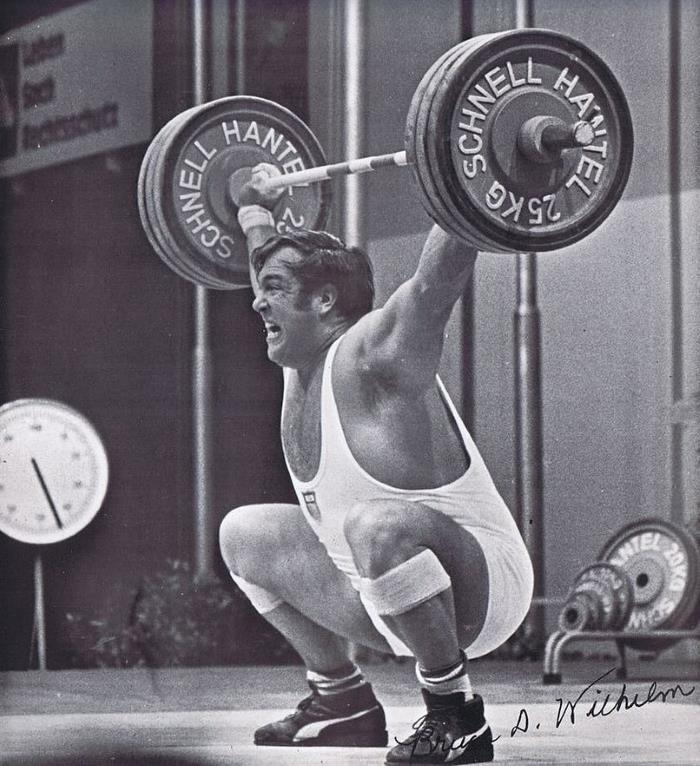
1979-1982
A legendary American powerlifter Bill Kazmaier appeared on the podium and dominated the sport from 1980 to 1982. However, after becoming the first man to win three consecutive WSM titles, he was excluded from the competition for five years. Kazmaier set remarkable lifts: a 478.5 kg silver dollar coin deadlift, a 439.5 kg squat (using a Smith machine), and a 165.6 kg log lift.
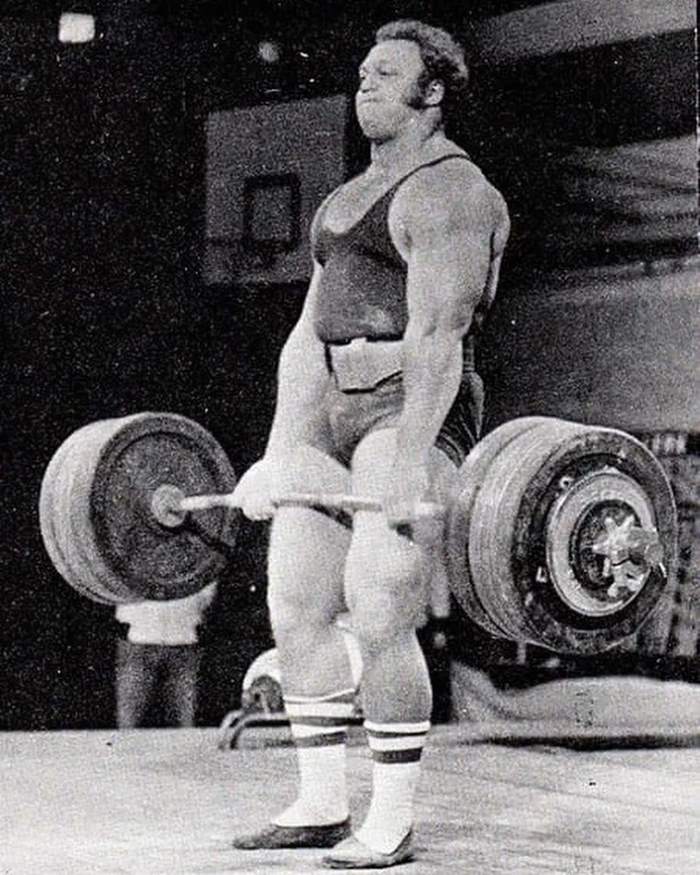
1983-1986
Former Olympian Geoff Capes from the UK, who won in 1983 and 1985, and the Icelandic powerlifter Jón Páll Sigmarsson, winning in 1984 and 1986.
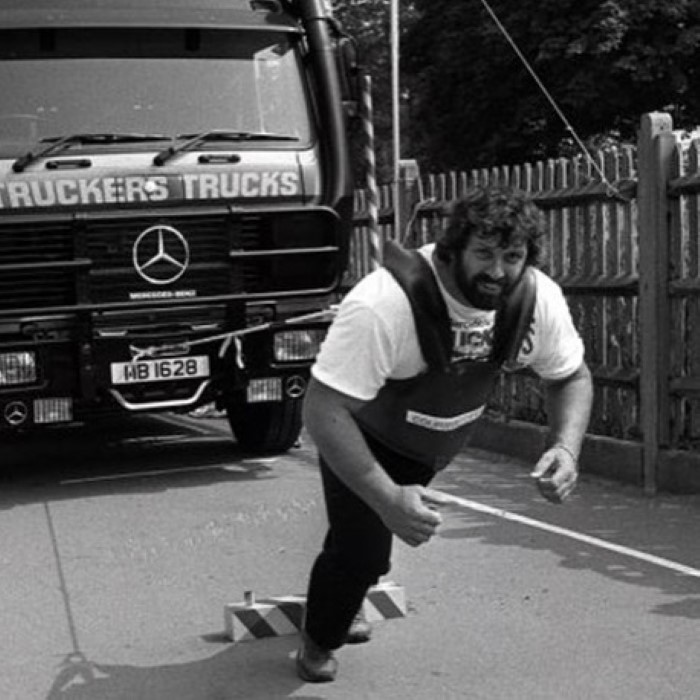
1987-1990
The WSM competition wasn’t held for the only time in its history. Instead, the Pure Strength contest was arranged from 1987 to 1990.
Sigmarsson continued to prevail in the competition in 1988 and 1990, with British Jamie Reeves became the winner in 1989.
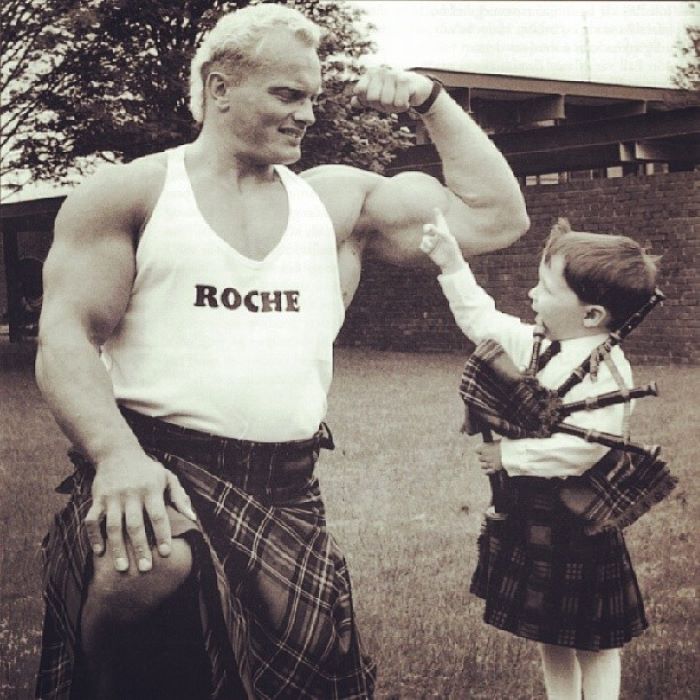
Early 1990s
Other talented athletes have risen from the crowd in the early 1990s, like Magnús Ver Magnússon from Iceland who won the title four times – in 1991, 1994, 1995, and 1996. He became the only man to win three consecutive titles after Bill Kazmaier.
This legendary Icelander was the creator of the Magnús Ver Magnússon Classic Series.
The dominance of the Scandinavian countries taking control of the title, lasting until 2002. A relatively small, but dynamic Jouko Ahola from Finland won two titles in three years during this period.
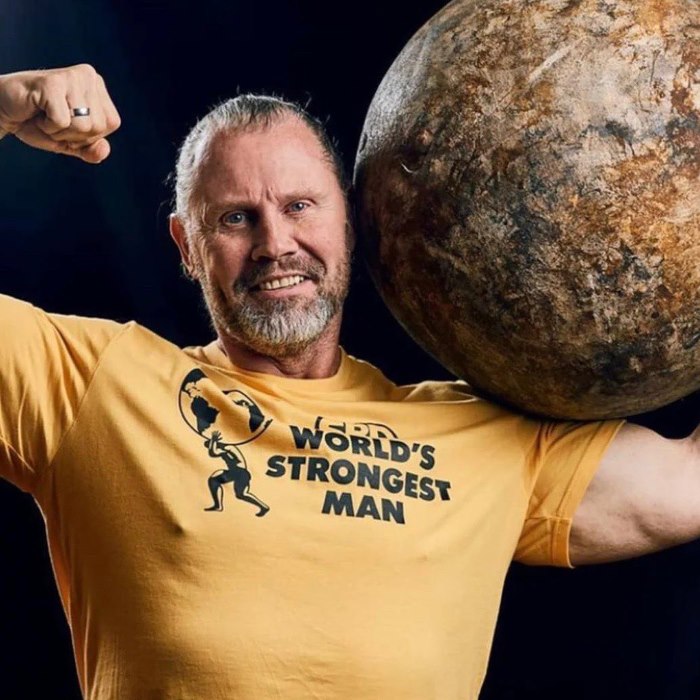
1992
The WSM contest was won by Dutchman Ted van der Parre, who is the tallest man ever to win and compete at the World’s Strongest Man.
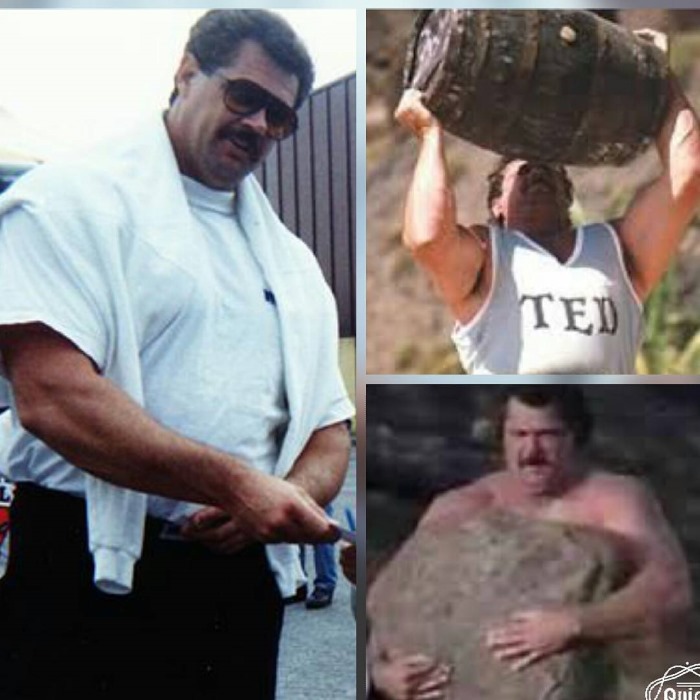
1993
Being 6 feet tall, Welshman Gary Taylor became the shortest man to ever win the contest, surpassing Magnús and Riku Kiri of Finland.
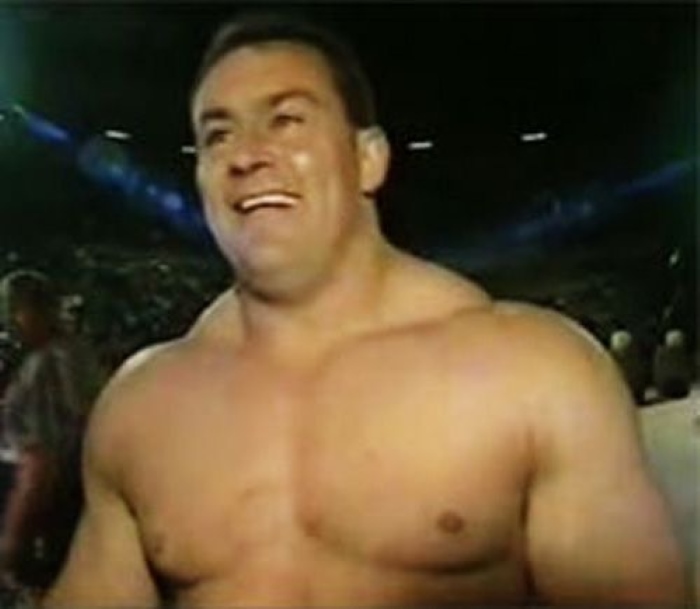
1994-1997
This period was a winning time for Magnús Ver Magnússon who succeeded to get his second, third, and fourth wins three years in a row (1994-1996). While Jouko Ahola got his first win in 1997.
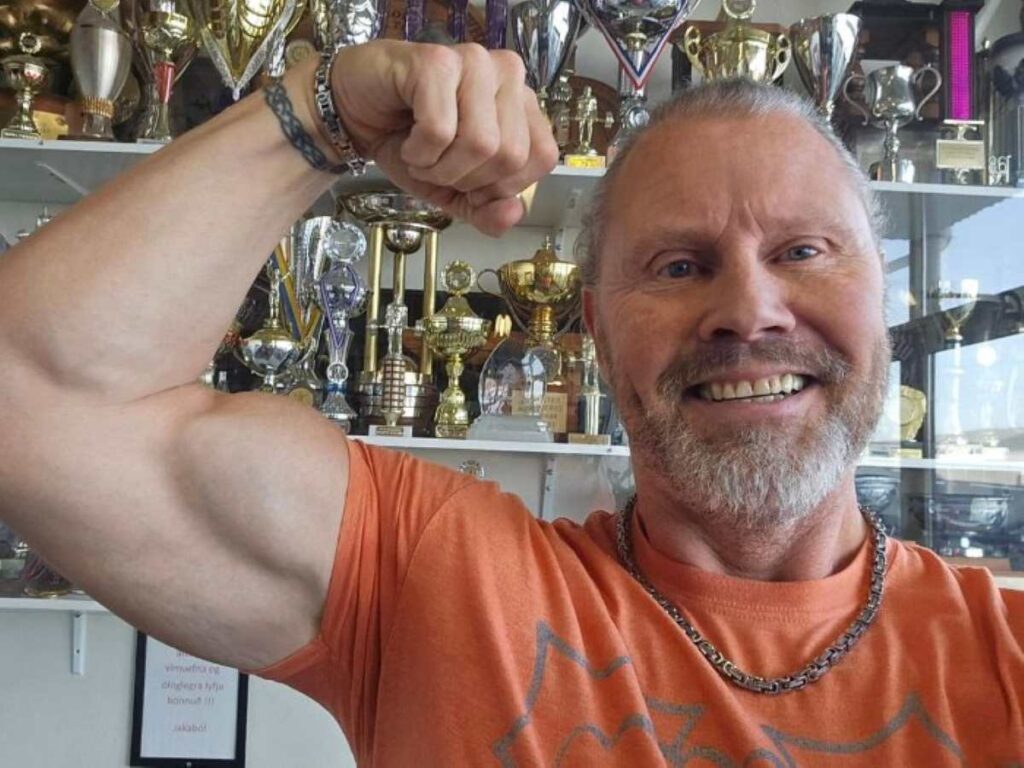
1998
Sweden’s Magnus Samuelsson claimed the title, becoming the only man to defeat Ahola in a WSM contest.
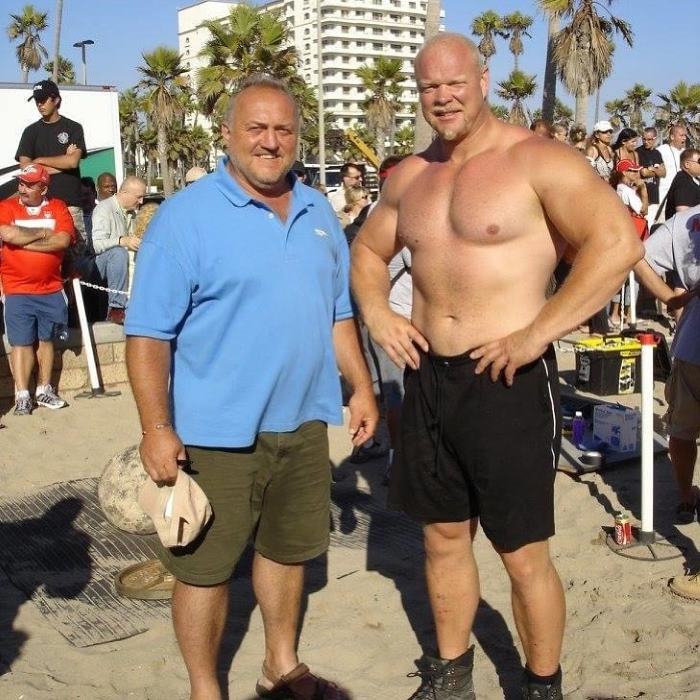
1999-2001
The WSM titles were taken by Finnish strongmen — Ahola took his second win and Janne Virtanen got his the only victorious title. Norwegian Svend Karlsen finally managed to become the leader after two years of being in the third and second spots.
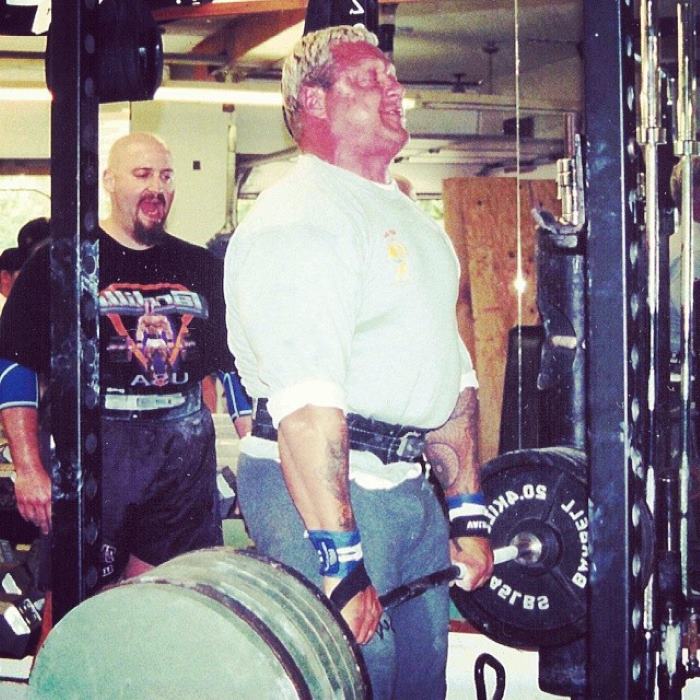
2002-2008
The dominance of a five-time Polish winner Mariusz Pudzianowski. He won his first title in 2002, with Lithuanian Žydrūnas Savickas and Latvian Raimonds Bergmanis completing the podium. The Polish strongman continued to reign the rating in 2003, 2005, 2007, and 2008. While in 2006 and 2009 he became a runner-up in the Strongman events.
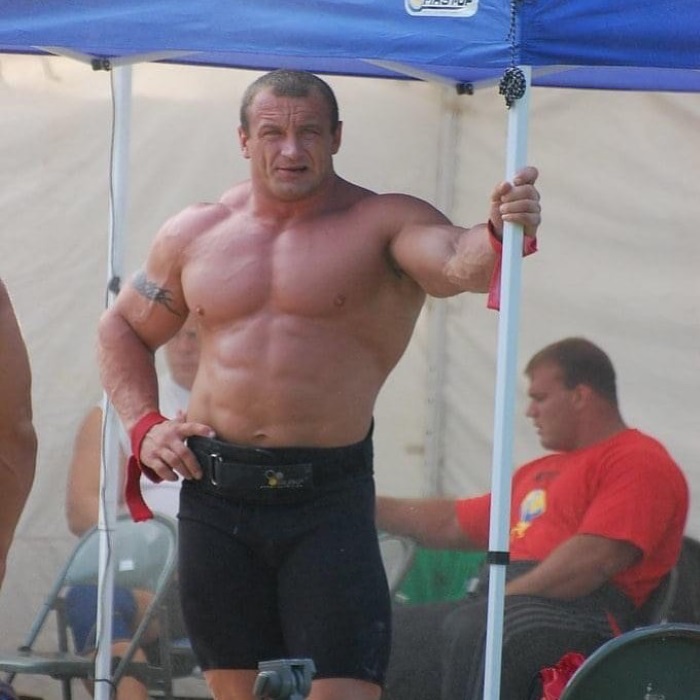
At this period, the Ukrainian Vasyl Virastyuk was the winner of World’s Strongest Man 2004, while Americans were trying to get into the leaderboard, getting second place in 2005 and winning the title in 2006.
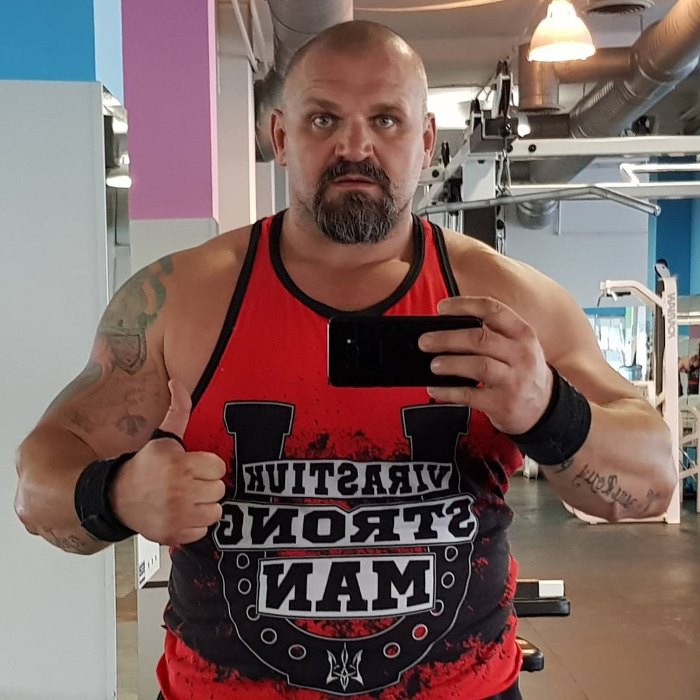
2009-2014
This period was a “hero time” for the Lithuanian strongman Zydrunas Savickas who was the WSM event winner in 2009, 20100, 2012, and 2014. At the same time, there was a tough battle between him and American Brian Shaw. The latter got the WSM title in 2011 and 2013.
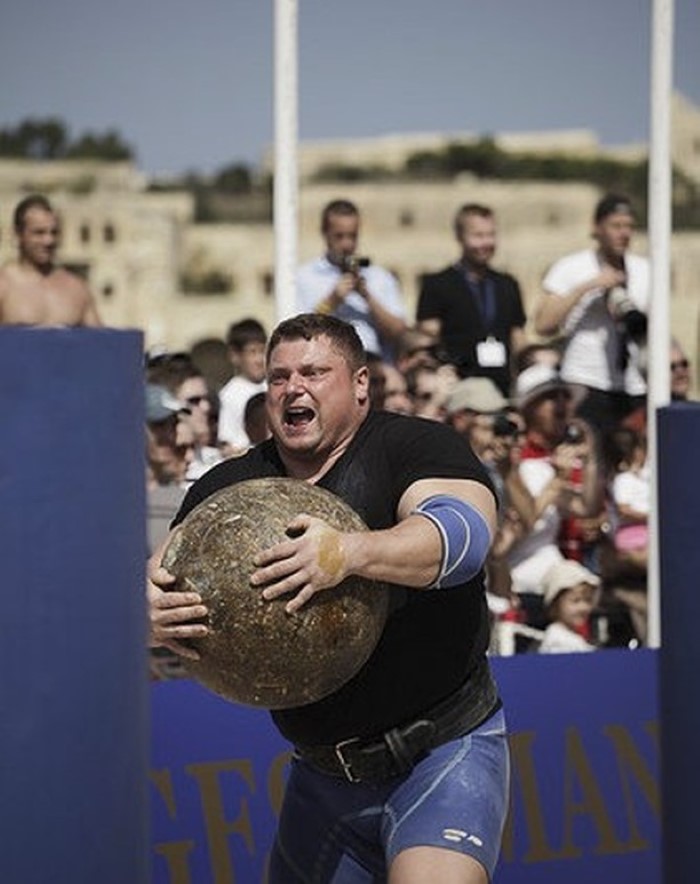
2015-2019
These years were highlighted by the continuing prevalence of American Brian Shaw and Martins Licis who won the title in 2019, with Icelandic powerhouse Hafþór Júlíus Björnsson.
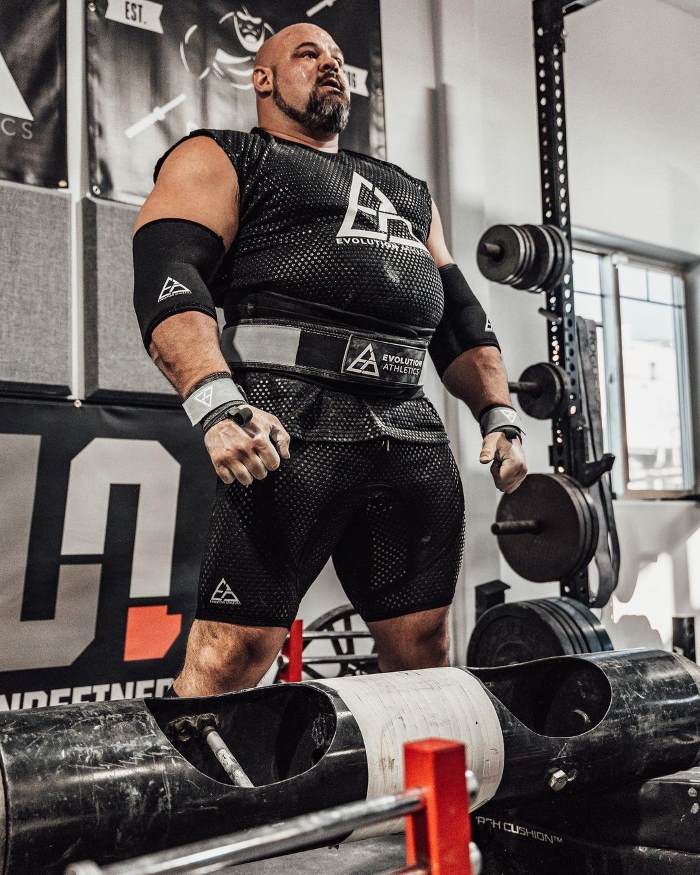
2020
We saw brothers Tom and Luke Stoltman becoming the first brothers who both reached the final. There were some changes in the event format: it included only 25 instead of 30 competitors, and the entire competition only ran for 4 days instead of the usual 5 or more. The final was reduced to 5 events in one day.
Also, Ukrainian Oleksii Novikov won the competition this year, setting a new partial deadlift record of 537.5 kg during the finals. Tom Stoltman acquired 2nd place this time, winning 3 of 6 events.

2021
Novikov failed to advance, finishing 4th, which was just one point separating the 1st and the 4th positions. Tom Stoltman claimed his first title after defeating four-time champion Brian Shaw in the Atlas Stones, and became the first Scotsman to win the title.
2022
Tom Stoltman defended his title, winning over Licis (in 2nd) and Oleksii Novikov (in 3rd).
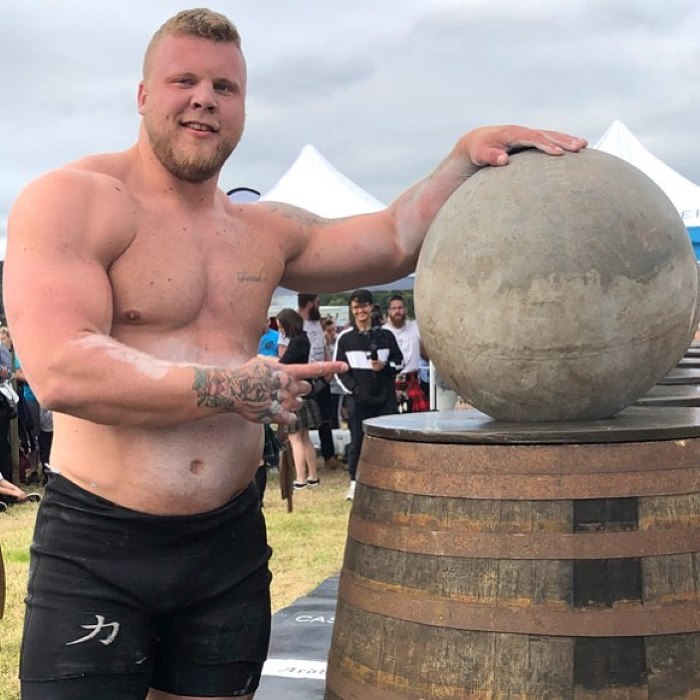
2023
Mitchell Hooper continued his rapid rise after his debut the previous year. He secured 1st place. While two-time Champion Tom Stoltman finished 2nd and 2020 Champion Oleksii Novikov came 3rd.

2024
Tom Stoltman reclaimed his title as the World’s Strongest Man and became one of 7 men to hold the title at least 3 times.
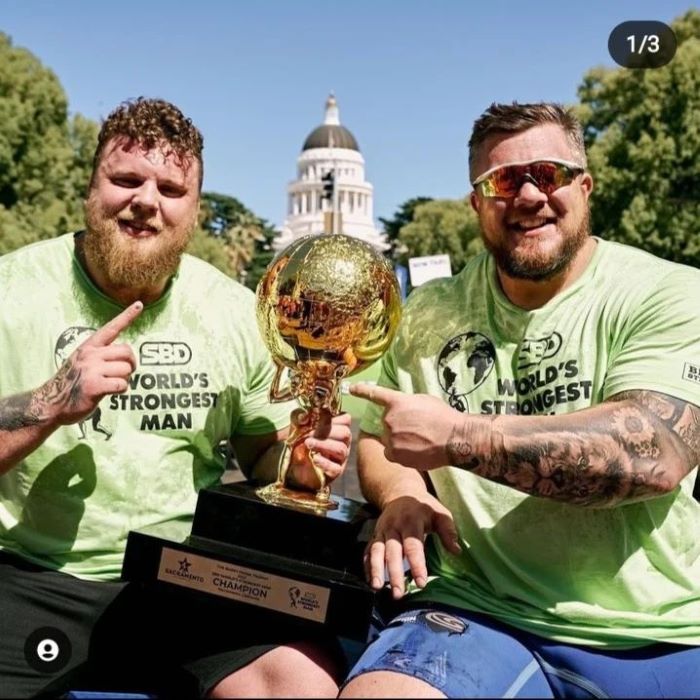
The History of the World’s Strongest Man Competition: Evolution
Like the Olympic Games, The World’s Strongest Man is one of the sports’ capstone events. The world’s best athletes arrange their competitive year by considering its schedule, implementing preparation strategies, focusing all their energy, and showing their best condition.
Over the decades, other titles appeared to provide a more authentic test of who is the planet’s strongest man. Nevertheless, the World’s Strongest Man title for sport’s elite is a key indicator of athletes’ power. Athletes competing in the World’s Strongest Man are full-time professional sportsmen who train every day.
23 men held the World’s Strongest Man winner’s trophy, of whom 12 are strongman competition winners who took single wins, including America’s Martins Licis and Ukraine’s Oleksii Novikov.
The table below presents the world strongest man winners by year, highlighting the nations that prevail over the years at this world event:
| Year | Winner | 2nd place | 3rd place |
|---|---|---|---|
| 1977 | Bruce Wilhelm (USA) | Bob Young (USA) | Ken Patera (USA) |
| 1978 | Bruce Wilhelm (USA) | Don Reinhoudt (USA) | Lars Hedlund (SE) |
| 1979 | Don Reinhoudt (USA) | Lars Hedlund (SE) | Bill Kazmaier (USA) |
| 1980 | Bill Kazmaier (USA) | Lars Hedlund (SE) | Geoff Capes (UK) |
| 1981 | Bill Kazmaier (USA) | Geoff Capes (UK) | Dave Waddington (USA) |
| 1982 | Bill Kazmaier (USA) | Tom Magee (CA) | John Gamble (USA) |
| 1983 | Geoff Capes (UK) | Jón Páll Sigmarsson (IS) | Simon Wulfse (NL) |
| 1984 | Jón Páll Sigmarsson (IS) | Ab Wolders (NL) | Geoff Capes (UK) |
| 1985 | Geoff Capes (UK) | Jón Páll Sigmarsson (IS) | Cees de Vreugd (NL) |
| 1986 | Jón Páll Sigmarsson (IS) | Geoff Capes (UK) | Ab Wolders (NL) |
| 1987 | NOT HELD | ||
| 1988 | Jón Páll Sigmarsson (IS) | Bill Kazmaier (USA) | Jamie Reeves (UK) |
| 1989 | Jamie Reeves (UK) | Ab Wolders (NL) | Jón Páll Sigmarsson (IS) |
| 1990 | Jón Páll Sigmarsson (IS) | O.D. Wilson (USA) | Ilkka Nummisto (FIN) |
| 1991 | Magnús Ver Magnússon (IS) | Henning Thorsen (DK) | Gary Taylor (UK) |
| 1992 | Ted van der Parre (NL) | Magnús Ver Magnússon (IS) | Jamie Reeves (UK) |
| 1993 | Gary Taylor (UK) | Magnús Ver Magnússon (IS) | Riku Kiri (FIN) |
| 1994 | Magnús Ver Magnússon (IS) | Manfred Hoeberl (AUT) | Riku Kiri (FIN) |
| 1995 | Magnús Ver Magnússon (IS) | Gerrit Badenhorst (SA) | Marko Varalahti (FIN) |
| 1996 | Magnús Ver Magnússon (IS) | Riku Kiri (FIN) | Gerrit Badenhorst (SA) |
| 1997 | Jouko Ahola (FIN) | Flemming Rasmussen (NOR) | Magnus Samuelsson (SE) |
| 1998 | Magnus Samuelsson (SE) | Jouko Ahola (FIN) | Wout Zijlstra (NL) |
| 1999 | Jouko Ahola (FIN) | Janne Virtanen (FIN) | Svend Karlsen (NOR) |
| 2000 | Janne Virtanen (FIN) | Svend Karlsen (NOR) | Magnus Samuelsson (SE) |
| 2001 | Svend Karlsen (NOR) | Magnus Samuelsson (SE) | Janne Virtanen (FIN) |
| 2002 | Mariusz Pudzianowski (POL) | Žydrūnas Savickas (LTU) | Raimonds Bergmanis (LV) |
| 2003 | Mariusz Pudzianowski (POL) | Žydrūnas Savickas (LTU) | Vasyl Virastyuk (UA) |
| 2004 | Vasyl Virastyuk (UA) | Žydrūnas Savickas (LTU) | Magnus Samuelsson (SE) |
| 2005 | Mariusz Pudzianowski (POL) | Jesse Marunde (USA) | Dominic Filiou (CA) |
| 2006 | Phil Pfister (USA) | Mariusz Pudzianowski (POL) | Don Pope (USA) |
| 2007 | Mariusz Pudzianowski (POL) | Sebastian Wenta (POL) | Terry Hollands (UK) |
| 2008 | Mariusz Pudzianowski (POL) | Derek Poundstone (USA) | Dave Ostlund (USA) |
| 2009 | Žydrūnas Savickas (LTU) | Mariusz Pudzianowski (POL) | Brian Shaw (USA) |
| 2010 | Žydrūnas Savickas (LTU) | Brian Shaw (USA) | Mikhail Koklyaev (RU) |
| 2011 | Brian Shaw (USA) | Žydrūnas Savickas (LTU) | Terry Hollands (UK) |
| 2012 | Žydrūnas Savickas (LTU) | Vytautas Lalas (LTU) | Hafþór Júlíus Björnsson (IS) |
| 2013 | Brian Shaw (USA) | Žydrūnas Savickas (LTU) | Hafþór Júlíus Björnsson (IS) |
| 2014 | Žydrūnas Savickas (LTU) | Hafþór Júlíus Björnsson (IS) | Brian Shaw (USA) |
| 2015 | Brian Shaw (USA) | Žydrūnas Savickas (LTU) | Hafþór Júlíus Björnsson (IS) |
| 2016 | Brian Shaw (USA) | Hafþór Júlíus Björnsson (IS) | Eddie Hall (UK) |
| 2017 | Eddie Hall (UK) | Hafþór Júlíus Björnsson (IS) | Brian Shaw (USA) |
| 2018 | Hafþór Júlíus Björnsson (IS) | Mateusz Kieliszkowski (POL) | Brian Shaw (USA) |
| 2019 | Martins Licis (USA) | Mateusz Kieliszkowski (POL) | Hafþór Júlíus Björnsson (IS) |
| 2020 | Oleksii Novikov (UA) | Tom Stoltman (UK) | Jean-François Caron (CA) |
| 2021 | Tom Stoltman (UK) | Brian Shaw (USA) | Maxime Boudreault (CA) |
| 2022 | Tom Stoltman (UK) | Martins Licis (USA) | Oleksii Novikov (UA) |
| 2023 | Mitchell Hooper (CA) | Tom Stoltman (UK) | Oleksii Novikov (UA) |
| 2024 | Tom Stoltman (UK) | Mitchell Hooper (CA) | Evan Singleton (USA) |
Multiple Time Winners
Speaking about the frequency of holding a title by country, the USA is on the top of the World’s Strongest Man titles by nation, with 12 victories.
Iceland falls behind, boasting 9 titles. Britain has 6 wins, becoming the world’s third most successful nation, just one victory ahead of Poland. Lithuania is fifth, thanks to Žydrūnas Savickas’s 4 victories, with Finland just behind having topped the podium three times.
The only other nation to have won more than one title is Ukraine, having taken the title twice, thanks to Vasyl Virastyuk and Oleksii Novikov. While the Netherlands, Norway, and Sweden took single titles.
Let’s observe famous strongmen who hold the most titles in the history of the WSM competitions:
| Athlete’s name | Country | Times | Years of the victory |
|---|---|---|---|
| Mariusz Pudzianowski | Poland | 5 | 2002, 2003, 2005, 2007, 2008 |
| Jón Páll Sigmarsson | Iceland | 4 | 1984, 1986, 1988, 1990 |
| Magnús Ver Magnússon | Iceland | 4 | 1991, 1994, 1995, 1996 |
| Žydrūnas Savickas | Lithuania | 4 | 2009, 2010, 2012, 2014 |
| Brian Shaw | USA | 4 | 2011, 2013, 2015, 2016 |
| Bill Kazmaier | USA | 3 | 1980, 1981, 1982 |
| Tom Stoltman | UK | 3 | 2021, 2022, 2024 |
| Bruce Wilhelm | USA | 2 | 1977, 1978 |
| Geoff Capes | USA | 2 | 1983, 1985 |
| Jouko Ahola | Finland | 2 | 1997, 1999 |
The List of all World’s Strongest Man Winners: Short Bios and Notable Results
The WSM competition has changed and progressed over the years, with numerous generations of strongmen competing with great endeavors hoping to add their names to the history of the Strongman tournament.
Each time a big question arises: who’s the next strongest man in the world? Indeed, WSM involves the most powerful athletes in the world who compete in insane events.
Let’s remember all WSM winners since its inception. Below is a world’s strongest man winners list, which will allow you to learn and compare the world’s strongest man results in powerlifting and WSM competitions.
Follow us!

Free!
Get a 2-week Weightlifting Program as a bonus for the subscription to kickstart your training plan!

Free!
Bruce Wilhelm (1977-1978)
Bruce Wilhelm is a two-time winner of the World’s Strongest Man competition in 1977 and 1978. In high school, he was taking up track and field. Subsequently, he continued competing in shot, discus, and wrestling at Stanford University.
Wilhelm became a weightlifter and was the US National AAU Super Heavyweight Weightlifting Champion in 1975 and 1976. He won silver for the United States at the 1975 Pan-American Games in Mexico City in the +110 kg category and placed 5th at the 1976 Olympic Games in Montreal.
Here’s the routine he followed during the preparation for the contest:
Tuesday:
- Power Snatch – up to 330 or 352 x 1
- Snatch Grip Hi-Pull – up to 396 for 2 sets of 3 reps
- Stiff-leg Deadlift – 474 x 10
- Back Squat – 683 for 2 sets of 3
Thursday:
- Bent-Leg Good Morning – to 396 x 5
- Push Press – 462 x 3
Saturday:
- Power Clean and Jerk – to 452 x 1
- Clean Grip Hi-Pull – 507 x 2 sets of 3
- Back Squat – 485 x 5 sets of 3
Don Reinhoudt (1979)
Don Reinhoudt is an American powerlifter and strongman who won the IPF World Powerlifting Super Heavyweight Championship four consecutive times from 1973 to 1976 and the World’s Strongest Man in 1979.
His powerlifting records include:
- Squat – 423.9 kg raw without knee wraps
- Bench press – 275.5 kg raw
- Deadlift – 401.6 kg raw
- Powerlifting Total – 904.5-601.5-885.5 raw with only ace bandages
Olympic Weightlifting records include:
- Snatch – 260 lb
- Clean & Jerk – 370 lb
- Total – 630 lb
World’s Strongest Man records (of 1979):
- Barrel Overhead Press – 300 lbs barrel (lifting barrel of the ground to arm’s length)
- Car Lift Deadlift – 2550 lbs car lifting two tires off the ground
- Girl Lift (Squat on Smith Machine) – 1000 lbs (453.5 kg)
During the training, Don focuses on building overall strength and conditioning. His workout includes a combination of weightlifting, strongman events, and cardio. He performed exercises such as deadlifts, squats, bench press, and overhead press.
Don also such strongman events as farmer’s walks, tire flips, and atlas stone lifts to improve his functional strength.
Bill Kazmaier (1980-1982)
Bill Kazmaier is an American former world champion powerlifter, world champion strongman, and professional wrestler.
During the 1970s and 1980s, he set numerous powerlifting and strongman world records, and won two International Powerlifting Federation World Championships and three World’s Strongest Man titles.
His powerlifting records are the following:
- Squat – 420 kg in 80s marathon squat suit
- Bench press – 300 kg raw
- Deadlift – 402 kg raw
- Total – 1100 kg (420.0/300.0/380.0) in 80s marathon squat suit
While the World’s Strongest Man records are:
- Deadlift – 415 kg raw, without wrist straps, in 1981
- Car Lift (Deadlift) – 1,159 kg car-winning lift 1979 (lifting two tires off the ground)
- Cement Block Lift (Squat on Smith Machine) – 440 kg winning lift, at WSM 1981
- Silver Dollar Deadlift – 478.5 kg winning lift WSM 1982 (18″ off the floor with wrist straps)
- Overhead Log Lift – 170 kg winning lift WSM 1988 (awkward wooden log with great circumference)
- Hungarian Farm Cart Deadlift – 510 kg winning lift WSM 1988.
Bill trained heavy, working the three main lifts with all assistance work twice a week. The Kaz used a high intensity, high volume workout routine: he performed deadlift, squat, and bench twice a week.
Kazmaier used a heavy/light approach to training. His first bench press workout of the week was heavy, while the second was light. Bill divided heavy/light workouts on squat and deadlift days.
Let’s observe one day of his training routine:
- Bench (heavy) warm up, 4 sets x 10 reps
- Wide Grip Bench 3 sets x 10 reps
- Narrow Grip Bench 3 sets x 10 reps
- Front Delt Raise 4 sets x 8 reps
- Dumbell Seated Press 4 sets x 10 reps
- Side Delt Raise 4 sets x 10 reps
- Lying Tricep Push (after 2 warm up sets) 6 sets x 10 reps
- Tricep Push Down 4 sets x 10 reps
Geoff Capes (1983, 1985)
Geoff Capes is a British former shot putter, strongman, twice Commonwealth champion, twice European indoor champion, and competed at three Olympic Games. As a strongman, he was particularly known for his incredible hand and arm strength.
Aside from the WSM, Capes also won Europe’s Strongest Man three times: in 1980, 1982, and 1984. He regained his Britain’s Strongest Man title in 1981 and in 1983. Additionally, Capes won the World Muscle Power championship in 1987.
His personal records include:
- Bench Press – 300 kg raw
- Squat – 380 kg raw
- Deadlift – 454.5 kg from height of 18 inches.
Capes trained around 5 hours a day, burning around 12000 calories daily. He centered around strength training exercises such as squats, deadlifts, bench press, and rows. He performed these exercises with heavy weights and low reps, focusing on proper form and technique.
He also included conditioning and cardiovascular exercises into his routine, e.g., running, cycling, and swimming, to improve his stamina and overall fitness.
Jón Páll Sigmarsson (1984, 1986, 1988, 1990)
Jón Páll Sigmarsson is an Icelandic strongman, powerlifter, and bodybuilder who was the first man to win the World’s Strongest Man four times and the first and only man to win the World Muscle Power Classic five times.
His powerlifting records are:
- Squat – 365 kg raw
- Equipped bench press – 247.5 kg
- Raw bench press – 235 kg raw
- Deadlift – 370 kg raw
- Total – 970 kg
Strongman records include:
- Rectangular-handled wheel deadlift – 523 kg
- Ox-cart deadlift – 515 kg
- Silver dollar deadlift (18 inches with wrist straps) – 525 kg
- Single hand deadlift (Raw without wrist straps) – 250 kg
- Log press – 165 kg
- Rock press – 125 kg
- Wheel-barrow push – 1,360 kg
Jon Páll was known for his intense workout: he trained six days a week, focusing on powerlifting, Olympic lifting, and strongman events. His workouts were intensive and often lasted for several hours.
His training routine focused on powerlifting and strongman exercises, such as deadlifts, presses, and rows. He also incorporated strongman-specific events, such as the sack race, atlas stones, and tire flip, to help him prepare for competitions.
Jamie Reeves (1989)
Jamie Reeves is a British former coal miner, strongman, and professional wrestler. As a strongman, he won the 1989 WSM, was the World Muscle Power champion, and acquired titles of Europe’s Strongest Man and Britain’s Strongest Man.
Jamie’s best results in powerlifting competitions are:
- Squat – 362.5 kg raw
- Bench press – 272.5 kg raw
- Deadlift – 367.5 kg raw
Let’s look at his training plan for the Week 1:
Monday:
- Squat (Olympic style, shoulder-width stance) – 3-5×8
- Step-ups – 2×10
- Stamina work
Wednesday:
- Bench Press – 3-5×8 (200 kg)
- Dips with weight (elbows tucked) – 3×8
- Speed work
Friday:
- Deadlift (no straps, no knurling) – 3-5×8 (300 kg)
- High Pulls – 3×5
- Hammer curls – 3×8
- Pull-ups – 1xfailure
- Stamina work
Sunday:
- Push Press – 3×5
- Standing dumbell presses (palms facing) – 2-3×8 (90 kg per hand, no legs)
- Laterals – 3×10
- Speed work
Magnús Ver Magnússon (1991, 1994-1996)
Magnús Ver Magnússon is an Icelandic former powerlifter and strongman competitor who is a four-time World’s Strongest Man winner.
His best lifts in powerlifting competition include:
- 437.5 kg squat
- 400 kg raw squat
- 275 kg bench press with shirt and 250 kg raw bench press
- 375 kg raw deadlift
- a raw total of 1015 kg.
Magnússon once held the world record for a tire deadlift of 445 kg.
His personal records include:
- Deadlift – 370 kg at 1996 WSM Final
- Tire Deadlift (off 15″) – 455 kg
- Bench press – 275 kg at 2004 Icelandic powerlifting championships
- Log press – 160 kg at 1995 Strongest Man on Earth
- Natural Stone press – 136 kg
Magnus Ver Magnusson believes that training to failure should be avoided. Light weights and more reps are better than heavy weights and less reps. He also believes that a two-week training routine is better than a one-week routine.
His typical weekly workout looks like:
Monday:
- Focusing on lower body strength
- Emphasizing squats, leg presses, and deadlifts
- The sessions often ramp up to maximum load attempts, simulating the heavy lifting conditions of the competition day
Wednesday:
- Shifting towards pressing movements to enhance his upper body strength
- Bench presses, overhead presses, and accessory work like dumbbell flyes and lateral raises
Friday:
- This day is dedicated to event-specific training like practicing Atlas stone lifts, tire flipping, or truck pulls. Such workouts allow one to improve technique in events.
Sunday:
- Includes active recovery, e.g., functional movements, conditioning work, or swimming to promote muscle recovery and maintain cardiovascular health.
Ted van der Parre (1992)
Ted van der Parre is a former strongman from the Netherlands, who won the World’s Strongest Man contest in 1992. Being at 2.09 m and 160 kilograms, he was the tallest man ever to compete in the World’s Strongest Man competition.
He’s also the winner of the Netherlands Strongest Man contest in 1991, 1992, and 1994.
He finished first in the following events:
- Weight Throw for 5 m (1992, WSM Final)
- Front Hold for 34.40 sec (1994, Strongest Man on Earth)
- Truck Pull for 22.90 sec (1994, WSM Heat 2)
Ted’s training routine includes a mix of weightlifting, cardio, and functional training. He believes that constantly challenging the body increases the weight and intensity of his workouts. He breaks down his workout routine according to the following scheme:
Monday:
- Chest and Triceps
- Bench press
- Incline bench press
- Cable flys
- Tricep pushdowns
- Skull crushers
Tuesday:
- Back and Biceps
- Deadlifts
- Pull-ups
- Cable rows
- Bicep curls
- Hammer curls
Wednesday:
- Cardio and Abs
- Running on the treadmill
- Cycling
- Planks
- Leg raises
- Russian twists
Thursday:
- Shoulders and Legs
- Shoulder press
- Lateral raises
- Front raises
- Squats
- Lunges
Friday:
- Cardio and Abs
- Running on the treadmill
- Cycling
- Planks
- Leg raises
- Russian twists
Saturday:
- Full Body Workout
- Squats
- Deadlifts
- Bench press
- Pull-ups
- Shoulder press
Gary Taylor (1993)
Gary Taylor is a Welsh former world’s strongest man champion (1993) who was competing in bodybuilding, Olympic weightlifting, and strongman.
His personal records include:
- Bench Press – 235 kg raw
- Squat – 405 kg
- Deadlift – 357 kg raw, with no wrist straps
- Behind-the-Neck Push Press – 210 kg winning lift at 1995 World’s Strongest Man Final
- Behind-the-Neck Push Press – 267.5 kg in 1994
Taylor’s training routine includes the following movements:
Monday:
- Behind Neck Push Press (6-7×3-5)
- Power Jerks (4-5×2-5)
- Strict Press (2-3×8-10)
- Front/Side Raise/Hold
Tuesday:
- Olympic Squat (5-6×3-5)
- Power Cleans (3-5×3-5)
- Step Ups
- Biceps
- Abs
Thursday:
- Bent Over Rows (stood on block, 3-4×5-8)
- High Pulls from blocks (5-6×2-5)
- Deadlifts from blocks (5-6×2-5)
- Biceps
- Abs
Friday:
- Incline Bench (2-3×6-8)
- Flat Bench (2-3×6-8)
- Behind Neck Power Jerks (5-6×3-5)
- Front/Side Raise/Hold
Jouko Ahola (1997, 1999)
Jouko Ahola is a Finnish former strongman and powerlifter. He’s a two-time World’s Strongest Man winner and a two-time Europe’s Strongest Man winner.
Ahola is best known for winning both the 1997 and 1999 World’s Strongest Man. In addition, he won the Europe’s Strongest Man contest twice in 1998 and 1999. Jouko won the World’s Strongest Team in 1997 and 1999.
He succeeded in setting world records in the Hercules hold (45.7 sec, 197 kg) and Atlas Stones (215 kg).
Ahola has the following personal records:
- Bench press – 220 kg raw
- Squat – 360 kg raw
- Deadlift – 406 kg raw
He believes in training movements, not muscles, and focuses on exercises that mimic day-to-day activities. His workouts include heavy lifts, such as squats and deadlifts, as well as explosive movements like cleans and snatches. Ahola also incorporates strongman-specific events, such as log presses and yokes.
Magnus Samuelsson (1998)
Magnus Samuelsson is a Swedish former strongman and winner of the 1998 World’s Strongest Man contest. He has also made it to the World’s Strongest Man podium 5 times and the finals 10 times and is one of the best strongmen in history.
In 2001, Samuelsson became the overall champion of the Strongman Super Series. He’s also known for his exceptional arm and grip strength.
His records during the strongman competitions are the following:
- Deadlift – 330 kg (2001 World’s Strongest Man)
- Squat – 300 kg (1997 World’s Strongest Man)
- Log press – 165 kg (1999 Beauty and the Beast)
- Axle press – 160 kg (2001 Beauty and the Beast)
- Bench press – 200 kg for 15 reps (2004 Sweden Grand Prix)
- Atlas Stones – 120-180 kg (5 stones) in 27.13 seconds (2000 Europe’s Strongest Man)
- Húsafell Stone – 186 kg for 30 meters in 16.88 seconds (2000 Europe’s Strongest Man)
- Tyre flip – 520 kg for 5 times (2004 Sweden Grand Prix)
- Conan’s Wheel – 300 kg for 1022° (2004 Sweden Grand Prix)
Samuelsson’s training regime aims to build strength and endurance, focusing on exercises that target multiple muscle groups. He incorporates weightlifting techniques, including powerlifting and Olympic lifting, as well as bodyweight movements such as pull-ups and push-ups.
Additionally, Samuelsson adds cardiovascular fitness, such as running and rowing.
Janne Virtanen (2000)
Janne Virtanen is a Finnish former strongman who won the World’s Strongest Man championship in 2000. His other accomplishments include four-time Finland’s Strongest Man (1998, 1999, 2000, 2001), Helsinki Grand Prix (2000), and the Turkey Grand Prix in 2002 in Istanbul. His personal record in Deadlift is 365 kg.
His personal records include:
- Maximum deadlift – 340 kg (2001 WSM Group 4)
- Maximum 18-inch Deadlift – 360 kg (2000 Atlantic Giant)
- Maximum Log Lift – 155 kg (2002 IFSA Turkey Grand Prix)
- Maximum Axle Press – 161 kg (2009 Romania Grand Prix)
He follows a training plan that focuses on building strength and endurance, particularly on compound exercises such as squats, deadlifts, and bench presses. He also includes other exercises into his routine, including farmer’s walks, tire flips, and log presses.
Svend Karlsen (2001)
Svend Karlsen is a Norwegian strongman, powerlifter, and IFBB professional bodybuilder. He’s a winner of the World’s Strongest Man in 2001, the 2001 Europe’s Strongest Man, the 2001 World Muscle Power Classic.
Karlsen started as a powerlifter in 1986, winning numerous titles and setting 30 Norwegian records, 3 European records, and 1 world record. He’s also a 3-time runner-up at the Arnold Strongman Classic 2002–04, and 3 time Norway’s Strongest Man in 2003, 2005 and 2006.
His personal records are:
- Deadlift – 425 kg
- Raw Deadlift – 400 kg for 3 reps
- Squat – 400 kg
- Squat (tyres on machine) – 318 kg for 14 reps (2002 World’s Strongest Man)
- X-Treme Squat – 551 kg (2003 X-Treme Strongman Championships) (World Record)
- Bench Press – 260 kg
- Log Press – 185 kg (2002 Sweden Grand Prix)
One day from his training routine look like:
- Barbell or Log curl – 2-3 sets of 6-12 reps
- Tier flip – 3 sets of 6,8, and 10 flips
- Stones – 3 sets of 5 reps
- Close grip bench press – 1 set of 4-6 reps and 1 set of 10-14 reps
- Laying French press – 2 sets of 8-12 reps
- Push down – 2 sets of 8-12 reps
- Crunches with weights – 3 sets of 12 reps
Mariusz Pudzianowski (2002, 2003, 2005, 2007, 2008)
Also known as “Dominator,” Mariusz Pudzianowski is a Polish mixed martial artist and former strongman competitor. Due to his 43 international wins at a record 70% victorious percentage in his strongman career, he is considered one of the greatest strength athletes of all time.
Regarding his strongman career, Pudzianowski is known as an athlete who won the most strongman competitions. Specifically, he took five World’s Strongest Man titles and won Europe’s Strongest Man event six times.
His personal records include the following:
- Bench press – 290 kg
- Squat – 380 kg
- Barrel Squat – 260–360 kg x 7 lifts in 27.53 seconds (2005 World’s Strongest Man)
- Deadlift – 415 kg (915 lb)
- Barrel Deadlift – 295–350 kg x 6 lifts in 33.89 seconds (2005 World’s Strongest Man)
- Log lift – 172 kg (2005 Met-Rx Grand Prix)
- Viking press – 150 kg x 12 reps (2007 Mohegan Sun Grand Prix)
- Kettlebell press – 80 kilograms x 8 reps (2009 Globe’s Strongest Man)
His morning gym session starts at 9 am with the following exercises:
- Back squat-Warm-up – 8 sets, pyramiding up to 160 kg from 60 kg.
- Squat working sets – increasing from 160 to 280 kg, 6 reps down to 2. Olympic-style squats, done with belt and knee wraps.
- Mariusz Pudzianowski leg curl (for hamstrings) – 20 reps x 6 sets
- Leg extension (for quads) – 20 reps x 6 sets
- Pull ups – 15 reps x 6 sets
- Chin ups – 10 reps x 6 sets
- Pulldowns (behind neck) – 15 reps x 4 sets.
- Barbell rows – 15 reps x 4 sets.
- Abs – 30 reps x 6 sets. This includes hanging leg raises, bends, and more.
Vasyl Virastyuk (2004)
Vasyl Virastyuk is a former Ukrainian strongman competitor who was the winner of World’s Strongest Man 2004. He’s also a 6-time Ukraine’s Strongest Man winner.
His personal bests in some events are the following:
- Max. Deadlift – 330 kg (2004 Sweden Grand Prix)
- Max. Hummer Tire Deadlift – 401 kg (2006 Arnold Strongman Classic)
- Max. Log Lift – 200 kg (2006 IFSA Russia Grand Prix)
- Max. Axle Press – 185 kg (2007 IFSA Strongman World Championships)
Vasyl Virastyuk’s workout routine involves strength training with a focus on compound exercises. He trains with heavy weights and incorporates cardio to maintain overall fitness. His workout plan includes deadlifts, squats, bench press, overhead press, and the Hercules hold.
He also involves grip strength exercises to improve his performance in strongman competitions. Usually, he trains five days a week, with a duration of 60-90 minutes. He also has rest days to allow his body to recover well.
Phil Pfister (2006)
Phil Pfister is an American former strongman competitor and a winner of the 2006 World’s Strongest Man competition. After his retirement in 2009, Pfister became a commentator for the World’s Strongest Man competition.
These are his major personal records in the following events:
- Max. Deadlift – 324 kg (2002 Arnold Strongman Challenge)
- Max. Hummer Tire Deadlift – 398 kg (2008 Arnold Strongman Classic)
- Max. Log Lift – 160 kg (2005 IFSA Strongman World Championships)
- Max. Axle Press – 150 kg (2001 Beauty and the Beast)
Let’s observe the training plan of one day that focuses on strength training:
- Warm-up – 10 minutes of dynamic stretching and light cardiovascular exercise.
- Overhead Press – 5 sets of 5 reps, increasing weight with each set.
- Bench Press – 4 sets of 6-8 reps, focusing on controlled movements.
- Dumbbell Shoulder Press – 8-10 reps for 3 sets.
- Triceps Dips – 3 sets until failure.
- Accessory Work – lateral raises, front raises, and tricep pushdowns 3 sets of 12 reps each.
Žydrūnas Savickas (2009, 2010, 2012, 2014)
Žydrūnas Savickas is a Lithuanian powerlifter and professional strongman who gained 84 international wins in major international strongman competitions including four World’s Strongest Man championships, eight Arnold Strongman Classic championships, two IFSA Strongman World Championships, and more than 70 world records.
So, he’s considered to be one of the greatest strength athletes of all time.
Savickas has the following powerlifting records:
- Squat – 425.5 kg (2005 Lithuanian National Championships, Lithuanian record)
- Bench press – 265.5 kg (2004 Lithuanian National Championships, Lithuanian record)
- Deadlift – 400 kg (2004 Lithuanian National Championships, Lithuanian record)
- Total – 1,090.5 kg (425|265.5|400) (2004 Lithuanian National Championships, Lithuanian record)
The following are his Strongman accomplishments:
- Log press – 228 kg: Savickas has broken this world record a total of 16 times ever since he did it first of 188 kg in 2004
- Giant Wooden Log press – 210 kg
- Log press/ Austrian Oak (for reps) – 204 kg for 4 reps (World Record)
- Apollon’s Axle press – 215 kg – Savickas has broken this world record a total of 6 times
Let’s see a sample of a one-day workout of Savickas that is a way of doing a high volume training, by increasing the weight:
- Back Squats – 1 set of 8 reps
- Back Squats – 5 sets of 5 reps
- Front Squats – 1 set of 8 reps
- Front Squats – 4 sets of 6 reps
- Leg Press – 1 set of 8 reps
- Leg Press – 4 sets of 8 reps
- Lying Leg Curl – 4 sets of 10 reps
- Calf Raises – 4 sets of 20 reps
Brian Shaw (2011, 2013, 2015, 2016)
Brian Shaw is an American retired professional strongman. He won the 2011, 2013, 2015, and 2016 World’s Strongest Man, making him one of five men to win the World’s Strongest Man four times or more. In 2011, Shaw became the first man to win the Arnold Strongman Classic and the World’s Strongest Man competitions in the same year.
Shaw’s impressive records include the following:
- Silver Dollar Deadlift (with suit and straps) – 490 kg (2018 World’s Ultimate Strongman)
- Hummer tyre Deadlift (with straps) – 512 kg (2014 Arnold Strongman Classic)
- Car Deadlift (for reps) – 386 kg x 12 reps (2018 World’s Strongest Man)
- Giant Barbell Squat (for reps) – 317.5 kg × 13 reps (single-ply suit w/ wraps) (2017 World’s Strongest Man)
- Log Lift – 200 kg × 2 reps (2014 Arnold Strongman Classic)
- Axle Press – 205 kg (Giants Live London 2011)
At the beginning of the workout, Shaw starts with warmups using a resistance band (4 sets of 25 reps), including overhead tricep band extensions, band pulldowns, and a flex fitness converging chest press. It takes him about 10 minutes.
For example, Monday is the leg day:
- Weighted squats – 2-5 reps, 5-8 sets, with rest time 1-2 minutes
- Good mornings – 8-15 reps, 4-5 sets, rest time 1-2 minutes
- Leg extension – 6-12 reps, 3-5 sets, rest time 1 minute.
Eddie Hall (2017)
Eddie Hall is a British retired strongman who is best known for his world-record 500-kg deadlift in 2016. In addition, he is known for winning the 2017 World’s Strongest Man contest. Hall won several different national competitions, which included England’s Strongest Man, Britain’s Strongest Man, and UK’s Strongest Man multiple times.
His competition records include:
- Deadlift – 500 kg (2016 World Deadlift Championships/ Europe’s Strongest Man)
- Rogue Elephant Bar Deadlift – 465 kg (2016 Arnold Strongman Classic)
- Raw Deadlift – 360 kg (without suit or straps) (2013 UK’s Strongest Man)
- Bench press – 280 kg (touch and go, with elbow sleeves) (2015 Amateur Powerlifting Challenge)
- Axle press – 216 kg (2017 Europe’s Strongest Man)
- Log press – 213 kg (2018 Europe’s Strongest Man)
Here are key components of Eddie’s training routine:
- Do no more than 6 reps at a time
- Lift at 80-90% of your capacity
- Rest in between sets and throughout the week
- Get a physical therapist
- Keep recovery equipment at home
- Focus on the big muscle groups rather than the smaller ones
- Consistency is key
Eddie’s focus is on getting as strong as possible by putting on some serious muscle mass.
Hafthór Júlíus Björnsson (2018)
Hafthór Júlíus Björnsson is an Icelandic professional strongman who is the first and only person to have won the Arnold Strongman Classic, Europe’s Strongest Man, and the World’s Strongest Man contests in the same year.
He holds numerous Strongman titles from different strength federations, including multiple world records. With 30 international competition victories, Björnsson is the third most powerful strongman in history, behind Lithuania’s Savickas and Poland’s Pudzianowski.
Here’s a list of Björnsson’s main personal records:
- Max. Deadlift – 501 kg (2020 WUS Feats of Strength – Max Deadlift)
- Max. 18-inch Deadlift – 520 kg (2018 WUS Dubai)
- Max. Hummer Tire Deadlift – 451 kg (2014 Arnold Strongman Classic)
- Max. Log Lift – 213 kg (2018 World Log Lift Championships)
- Max. Axle Press – 206 kg (2017 Europe’s Strongest Man)
LBjörnsson emphasizes core exercises and light dumbbell work. He does other warm-ups such as the paused deadlift, Cuban dumbbell presses, and farmer’s walk to prepare his body for some heavyweights. He also does a small cardio routine to bring up body temperature, as most powerlifters do this as well.
Martins Licis (2019)
Martins Licis is an American professional strongman, winning the 2019 World’s Strongest Man, 2022 Arnold Strongman Classic, and 2021 Rogue Invitational strongman championships. He’s the fourth strongman in history to win both the World’s Strongest Man and Arnold Strongman Classic competitions.
Some of his personal records of the sportsman are the following:
- Rogue Elephant Bar Deadlift – 440 kg (Raw with straps) (2019 Arnold Strongman Classic)
- IronMind S-Cubed Bar Deadlift – 440 kg (with deadlift suit and straps) (2017 World’s Strongest Man)
- Barrel Deadlift – 290-380 kg x 7 reps in 47.00 seconds (2018 World’s Strongest Man)
- Deadlift Static Hold – 320 kg for 41.25 seconds (2019 World’s Strongest Man)
- Silver Dollar Deadlift – 460 kg (2018 World’s Ultimate Strongman)
Licis shows how he plans to prepare for the competition:
- Day 1 of training includes Husafell carries, walking for 360 feet holding the awkward load of 200 pounds for multiple sets.
- Day 2 of training is back day, which includes farmer’s carries and banded deadlifts, which he loads with 500 pounds of weight and 180 pounds of additional resistance from bands. He works through 5 to 10 pulls of the heavy weight.
- Day 3 is log pressing day, including log strict presses to get his shoulders stronger, along with dumbbell shoulder presses on an incline bench.
- Day 4 (his final training day) is leg day, which includes heavy yoke carries and banded squats.
Oleksii Novikov (2020)
Oleksii Novikov is a Ukrainian professional strongman winner of the 2020 World’s Strongest Man competition and the second athlete from Ukraine to win the title since Vasyl Virastyuk in 2004. He is also a two-time World’s Ultimate Strongman, Rogue Invitational champion, and Europe’s Strongest Man.
Novikov is the current world record holder in the hummer tire deadlift, Flintstone press, and one arm giant dumbbell press for reps in 3 weight categories: 100 kg, 110 kg, and 125 kg.
Novikov’s personal records include the following:
- Equipped Deadlift – 453.5 kg (2021 World Deadlift Championships)
- Rogue Elephant Bar Deadlift (Raw) – 408.5 kg (2024 Arnold Strongman Classic)
- Hummer Tire Deadlift (from 15 inches) – 549 kg (2022 Shaw Classic) (World Record)
- Squat (with wraps) – 350 kg
- Double T Squat (equipped) – 411 kg (2022 Arnold Strongman Classic)
- Circus Dumbbell for Reps – 100 kg × 11 (World’s Ultimate Strongman, Feats of Strength series, 2020) (World Record)
Novikov’s training program aims to improve his absolute strength, which is the maximum amount of weight he can lift. He focuses on heavy dumbbell and overhead lifting, as these exercises are crucial for strongman competitions. Novikov incorporates weightlifting into his training regime to improve his technique and explosiveness.
Tom Stoltman (2021, 2022, 2024)
Tom Stoltman is a British professional strongman competitor and a three-time winner of the World’s Strongest Man in 2021, 2022, and 2024. In the same years, he also won the national title of Britain’s Strongest Man.
Moreover, he is currently the strongest man in the world. Stoltman acquired the nickname “The Albatross” due to his sizable arm span, as he is known for his mastery of the Atlas Stones event.
In 2020, Stoltman broke the following world records:
- for the 5 Atlas Stones (light set) 100–180 kg in just 16.01 seconds;
- for the heaviest Atlas stone ever lifted over a 1.22 meters bar at 286 kg.
His records in powerlifting are the following:
- Squat – 325 kg
- Bench Press – 220 kg
- Deadlift – 360 kg
- Total – 905 kg
In the Strongman competition, he has the following results:
- Deadlift – 430 kg (with suit) (2019 World’s Ultimate Strongman)
- Deadlift for reps – 400 kg x 5 reps (with suit) (2024 Britain’s Strongest Man)
- Elephant bar Deadlift – 415.5 kg (Raw) (2024 Arnold Strongman Classic)
- Hummer Tyre Deadlift (15 in off the floor) – 499 kg (2023 Shaw Classic)
- Silver Dollar Deadlift (18 in off the floor) – 478 kg (2020 World’s Strongest Man)
His training plan includes the following movements:
- Stiff-Legged Deadlift – 3 sets of 2 reps
- Deadlift – 3 sets of 2 reps
- Snatch Grip Barbell Row – 3 sets of 8 reps
- Seated Machine Row – 3 sets of 10 reps
- Superset – Machine Hip Thrust + Resistance Band Pull-Through for 2 sets of 8-20 reps
Mitchell Hooper (2023)
Mitchell Hooper is a Canadian strongman who took the 1st place at the 2023 World’s Strongest Man competition, where he also became the first Canadian to win the title of World’s Strongest Man.
Additionally, Hooper is the winner of both the 2023 and 2024 Arnold Strongman Classic events. In 2023, he became the fourth person to win both the World’s Strongest Man and Arnold Strongman Classic competitions in the same year.
Hooper says volume is not a key indicator of generating strength. An athlete performs three sets of 10 reps at 70% of their one-rep max will not make them as strong as physically possible. Instead, Hooper suggests the athlete’s lifts should aim to increase the percentage of their one-rep max.
Hooper trains fewer sets and fewer days per week than when he was a teenager since he is lifting significantly heavier loads. An experienced lifter can train more volume if the weights aren’t too heavy.
Conclusion
Having revealed the world’s strongest man winners, we can conclude that becoming a Strongman is worth trying as it boosts the muscularity, develops functional strength, so you’ll become stronger for gaining new achievements.
Tune into our blog news to see who will become the next winner and add their name to the list of the World’s Strongest Man giants.
References:
- The 2024 Rogue Invitational, https://www.roguefitness.com/invitational.
- Magnús Ver Magnússon Classic Series, https://www.magnusclassicseries.com/.
- Paul W. Winwood, Hayden J. Pritchard, Daniel Wilson, Mike Dudson, Justin W. L. Keogh, “The Competition-Day Preparation Strategies of Strongman Athletes,” Journal of Strength and Conditioning Research 33, no. 9 (2019): 2308-2320.
- Stoltman Brothers, https://stoltmanbrothers.com/pages/about.
- The World’s Strongest Man, https://www.theworldsstrongestman.com/events/.
- Photos are made by Torokhtiy Media team.
Why Trust Us?
With over 20 years in Olympic Weightlifting, our team does its best to provide the audience with ultimate support and meet the needs and requirements of advanced athletes and professional lifters, as well as people who strive to open new opportunities and develop their physical capabilities with us.
By trusting the recommendations of our certified experts in coaching, nutrition, dietology, and sports training programming, as well as scientific consultants, and physiotherapists, we provide you with thorough, well-considered, and scientifically proven content. All the information given in the articles concerning workout programming, separate exercises, and athletic performance, in general, is based on verified data. We ensure that you can rely on our professionals’ pieces of advice and recommendations that can be treated as personalized ones which will benefit you and fully meet your needs.
The product testing process is described in more detail here
Author: Sergiy Osipchyk
Strongman Coach,
Former coach of Oleksiy Novikov and Pavlo Nakonechnyy
Strongman Experience: 10+ years
Sergiy has been involved in strength sports since he was 10 years old, and already started coaching when he was just 15 years old.
He helps clients of any age and experiences achieve results using an individual approach, daily process control, consultation and training knowledge and techniques, total experience is more than 20,000 individual training sessions.
Sergiy has trained a roster of renowned PRO strongman athletes including Oleksii Novikov, Pavlo Nakonechnyy and many other.








Still have questions after reading our article? Unlock your full potential by engaging with our experts and community! Don’t hesitate — leave a comment below and Sergiy Osipchyk will provide a personalized answer and insights to help you reach your goals.